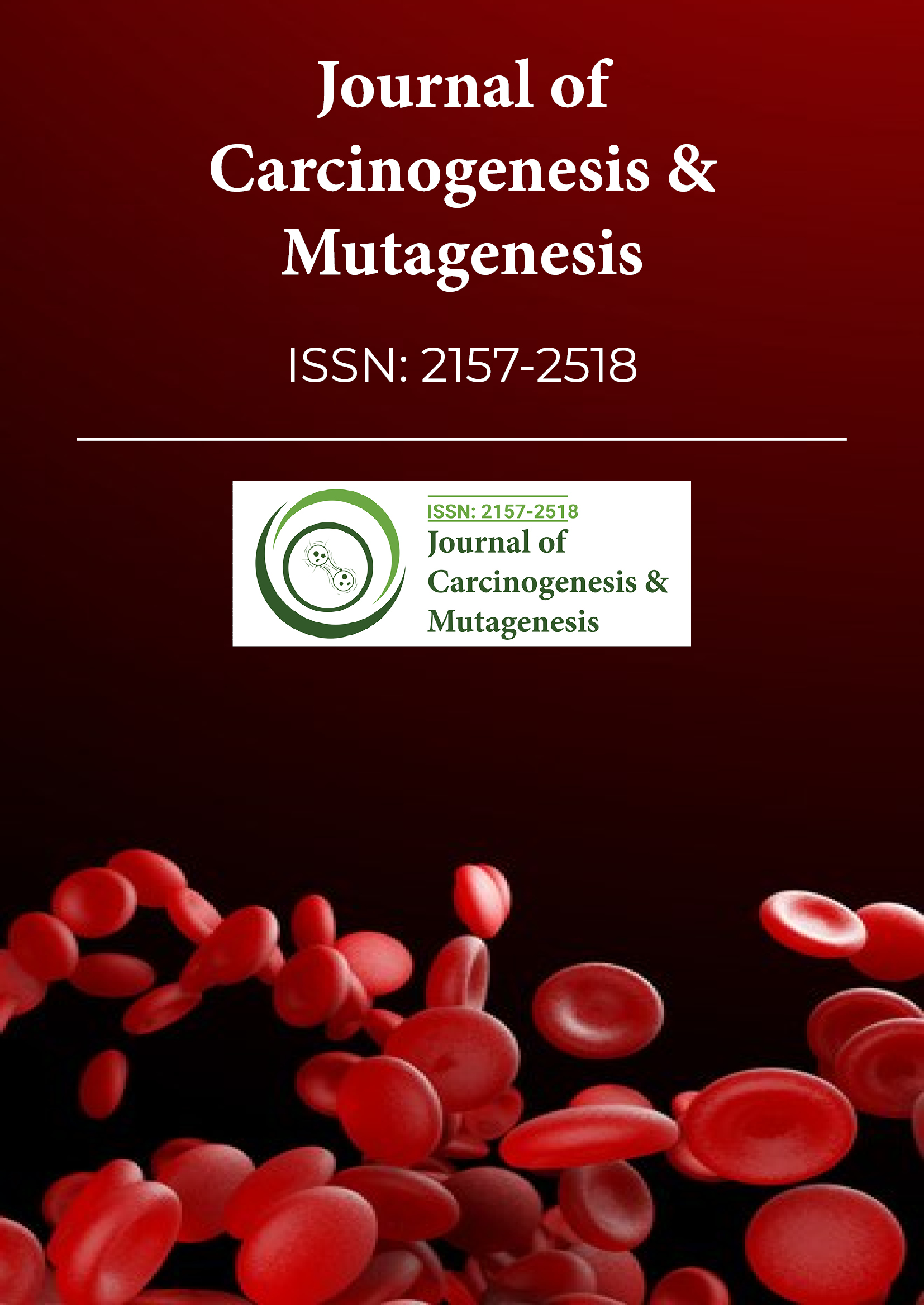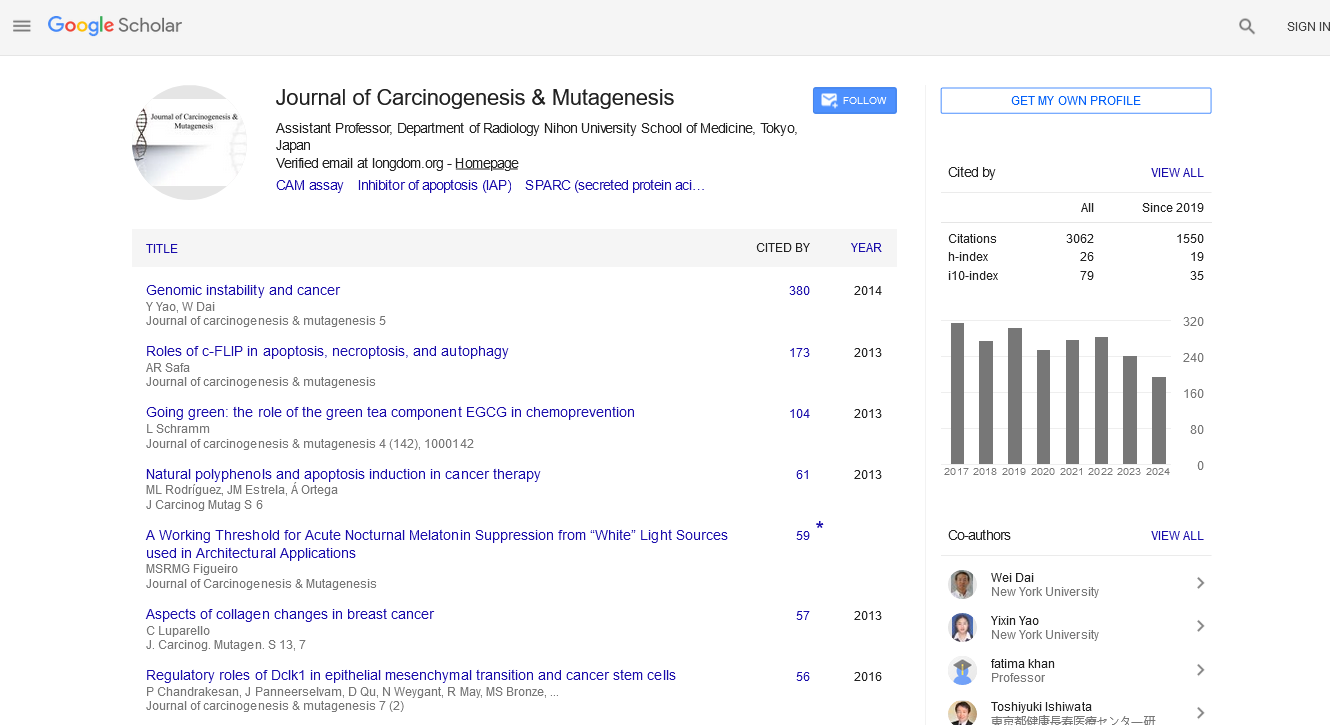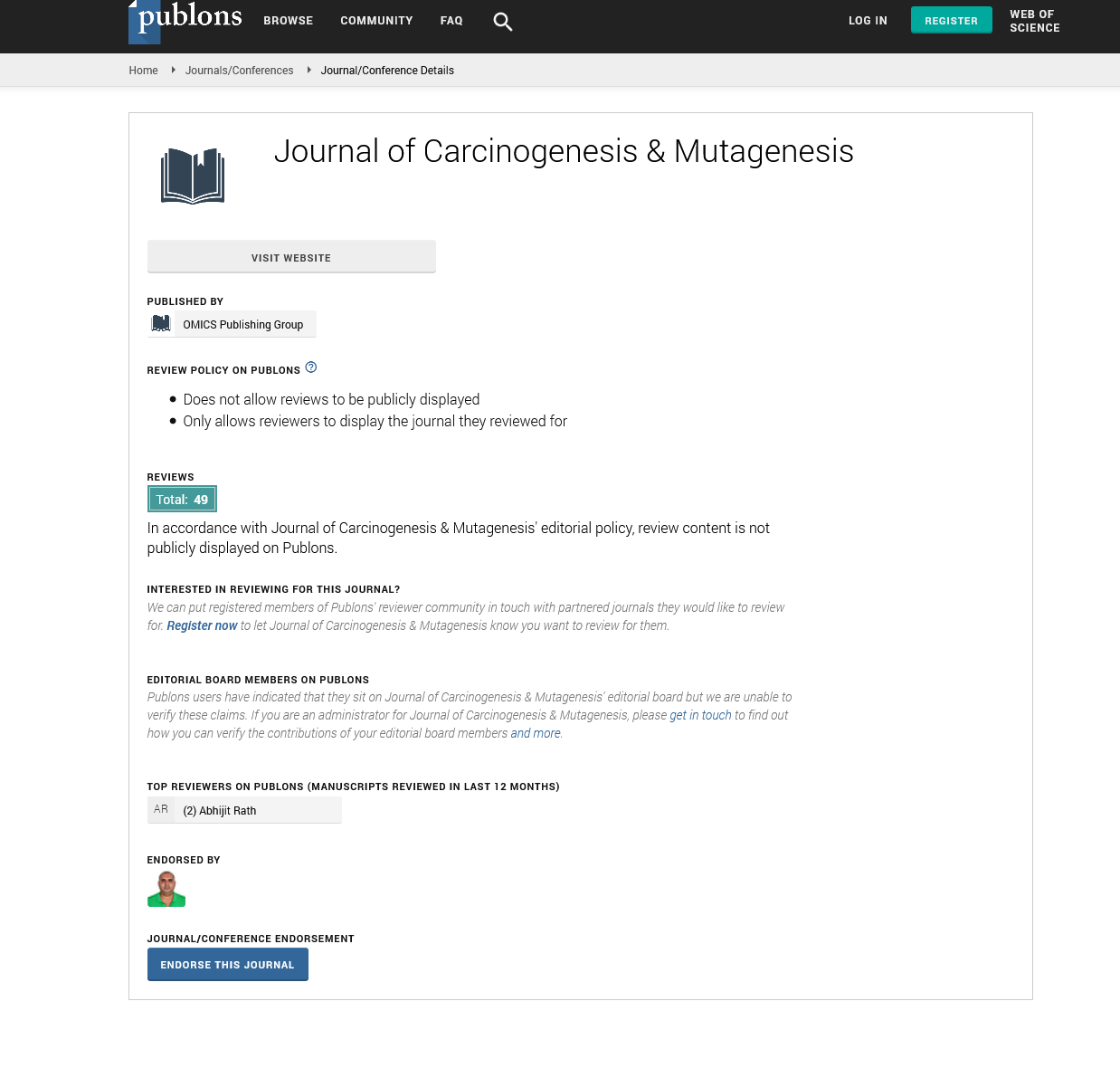Indexed In
- Open J Gate
- Genamics JournalSeek
- JournalTOCs
- Ulrich's Periodicals Directory
- RefSeek
- Hamdard University
- EBSCO A-Z
- OCLC- WorldCat
- Publons
- Geneva Foundation for Medical Education and Research
- Euro Pub
- Google Scholar
Useful Links
Share This Page
Journal Flyer

Open Access Journals
- Agri and Aquaculture
- Biochemistry
- Bioinformatics & Systems Biology
- Business & Management
- Chemistry
- Clinical Sciences
- Engineering
- Food & Nutrition
- General Science
- Genetics & Molecular Biology
- Immunology & Microbiology
- Medical Sciences
- Neuroscience & Psychology
- Nursing & Health Care
- Pharmaceutical Sciences
Commentary - (2025) Volume 0, Issue 0
Sepsis in Cancer Patients: Prevalence, Risk Factors, and Impact on Mortality
Park Lee*Received: 22-Jan-2025, Manuscript No. JCM-25-28719; Editor assigned: 24-Jan-2025, Pre QC No. JCM-25-28719 (PQ); Reviewed: 31-Jan-2025, QC No. JCM-25-28719; Revised: 01-Feb-2025, Manuscript No. JCM-25-28719 (R); Published: 21-Feb-2025, DOI: 10.35248/2157-2518.25.16.002
Description
Sepsis is a severe, life-threatening condition that arises from the body’s response to an infection, leading to widespread inflammation and organ dysfunction. Globally, sepsis affects an estimated 49 million people each year and is responsible for nearly 11 million potentially preventable deaths. The incidence and mortality rates of sepsis are notably higher among cancer patients than in the general population, making it a critical concern in oncology care. Understanding the prevalence, risk factors and impact of sepsis in cancer patients is vital for improving outcomes and reducing the high mortality associated with this condition.
Cancer patients are particularly vulnerable to infections due to the immunosuppressive effects of both the disease and its treatment. Chemotherapy, radiation and immunotherapy can severely compromise the immune system, making patients more susceptible to infections and, consequently, sepsis. Furthermore, the presence of cancer itself often leads to a state of immune dysfunction, contributing to a higher risk of developing infections. As a result, sepsis is a common and serious complication in cancer patients, particularly those undergoing aggressive treatments like chemotherapy or stem cell transplants.
The heterogeneity of the cancer population means that the risk factors for sepsis can vary greatly depending on the type of cancer, the stage of the disease and the specific treatments being administered. Hematologic cancers, such as leukemia, pose an especially high risk for sepsis. Patients with acute leukemia, in particular, often experience prolonged and profound neutropenia, a condition where the number of neutrophils (a type of white blood cell is important for fighting infections) is dangerously low. Neutropenia is one of the most significant risk factors for sepsis in cancer patients, as it weakens the body’s ability to mount an effective immune response to infections.
Conclusion
Sepsis remains a significant threat to cancer patients, with higher prevalence and mortality rates compared to the general population. The condition is often complicated by the immunosuppressive effects of both the cancer and its treatment, making early diagnosis and timely intervention important for improving outcomes. Understanding the prevalence, risk factors and sources of sepsis in cancer patients can guide more effective prevention and treatment strategies. Additionally, the impact of sepsis on mortality underscores the importance of early recognition and adherence to evidence-based treatment protocols to reduce the high mortality associated with this lifethreatening condition. The use of central venous catheters for chemotherapy and the need for surgical interventions in cancer treatment can provide a direct pathway for pathogens to enter the body, increasing the risk of sepsis.
Citation: Lee P (2025) Sepsis in Cancer Patients: Prevalence, Risk Factors and Impact on Mortality. J Carcinog Mutagen. S48:002.
Copyright: ©2025 Lee P. This is an open-access article distributed under the terms of the Creative Commons Attribution License, which permits unrestricted use, distribution and reproduction in any medium, provided the original author and source are credited.


